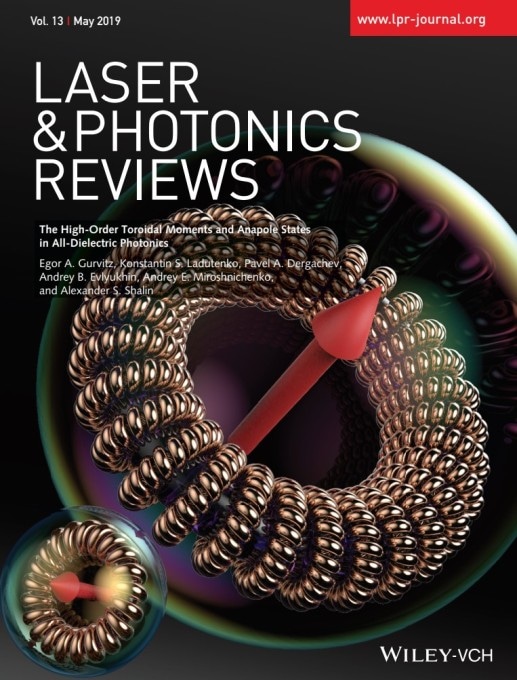May 21 2019
Scientists first described the new features of dielectric nanoparticles’ optical response using improved method for electromagnetic field analysis that can take into account more complex configurations of bias currents inside the objects. These effects help to better understand the processes in nanoparticles and adjust their behavior for more efficient light control in devices such as nanolasers or sensors. The results are published in Laser and Photonics Reviews and selected as materials for the issue cover.

Recently, dielectric nanoparticles have been actively used to control light on nanoscale. They cope with it better than previously proposed plasmon particles, help to avoid energy loss and obtain interesting physical effects. Therefore, dielectric particles can be used, for example, to create nanolasers, nanoantennas, sensors or information transfer devices. Scientists are trying to study their behavior in detail to apply them effectively.
Physicists from ITMO University for the first time described the new features of the optical response of dielectric particles. They managed to show that there are complex configurations of displacement currents inside the particle, which lead to toroidal moments of higher orders. Also, physicists have shown that the complex interaction of currents in a particle can switch it into a special non-radiative or anapole state. These results help to better understand the electromagnetic processes in nanoparticles and learn how to adjust their optical response to create more efficient devices.
“Imagine that you have a mechanism that you can adjust to different modes of operation using different gears. A multipole is the same gear for a particle. Particles of complex shape, as complex mechanisms, can perform more different tasks. But they have more gears and due to lack of information about them, it was impossible to control the work of such particles earlier. Our results solve this problem and provide significantly more possibilities for adjusting particles optical properties. This is a new step in dielectric photonics development, which will allow creating advanced devices,” explains Alexander Shalin, Head of the International Scientific Laboratory“ Nano-Optomechanics” of ITMO University.
According to scientists, the study began when the classical approaches to describing particles failed to gasp its complexity. Therefore, many research groups began searching for new theoretical models, and the work was conducted in an atmosphere of constant competition. Periodically, new results appeared that needed to be taken into account, and almost finished work had to be reviewed and supplemented several times. However, as a result, the article appeared on the cover of the journal issue and was given special attention by the editorial staff.
“This work was one of the first large-scale studies where I did most of the work myself. This applies even to the picture for the article that came up on the cover of the journal. The study is theoretical, and they are less likely to stand out in front of articles with the experimental part. So getting on the cover for me is a great achievement. It helps to attract the attention of the community and makes it clear that we have done a good job and deserved the recognition. I am glad that ITMO University provides an opportunity for young scientists to publish at such a high level. A well-coordinated team of the laboratory and the faculty allows this opportunity to be easily realized,” notes Egor Gurwitz, a graduate student at the Faculty of Physics and Technology of the ITMO University.